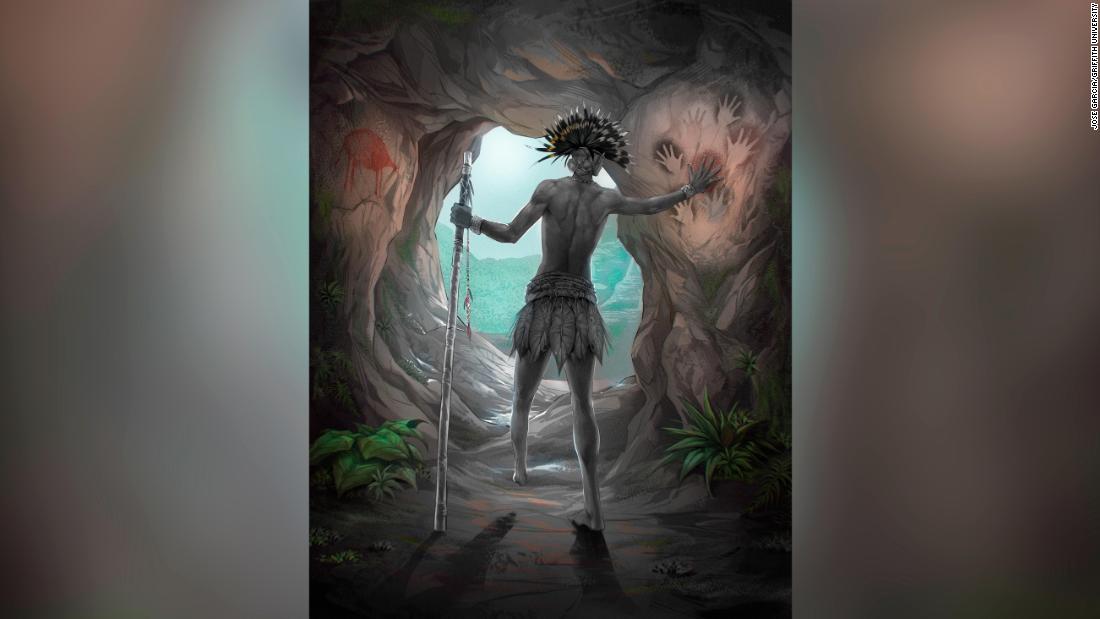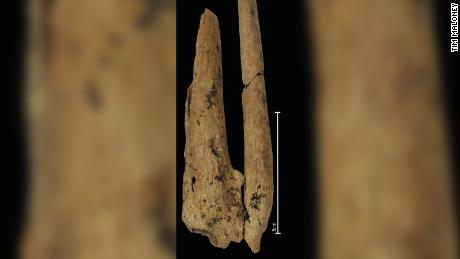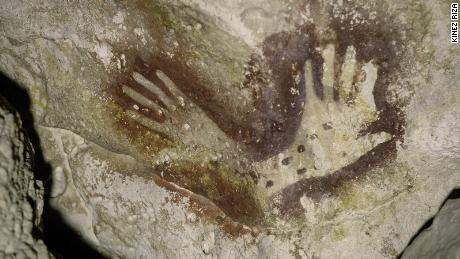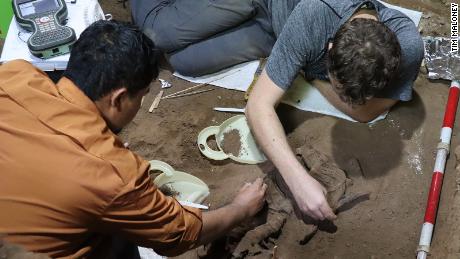
Utilizing radiocarbon courting strategies, scientists estimate the physique has lain undisturbed for 31,000 years contained in the Liang Tebo collapse jap Kalimantan province in Borneo, in line with analysis revealed within the journal Nature on Wednesday.
However essentially the most placing facet of the discovery was that the younger man or lady was lacking their decrease left leg, with indicators it had been fastidiously amputated when the particular person was a pre-teen or early teen earlier than their dying from unknown causes between 19 and 21, researchers stated.
The in any other case remarkably intact skeleton was discovered by in 2020 by Australian and Indonesian archaeologists, who say the amputation reveals appreciable surgical talent and is the earliest instance within the archeological report, shaking up our understanding of sophistication of Stone Age humans.
“It is vital as a result of it significantly pushes again our species’ data about surgical procedure and complicated medication,” stated Maxime Aubert, a professor at Griffith College’s Centre for Social and Cultural Analysis in Queensland, through e-mail.

“They had to have a profound data of human anatomy, the right way to cease the blood circulate, anaesthesia, and antisepsis. All of those solely grew to become the norm very not too long ago,” Aubert wrote.
Consultants had thought humans lacked the experience to carry out troublesome procedures like amputation till the emergence of agriculture and everlasting settlements reworked human society inside the final 10,000 years.
Previous to this discovery, the oldest identified amputee was an aged farmer whose whose left forearm had been eliminated simply above the elbow 7,000 years in the past in what’s now France, the examine famous. 
It was solely 100 years in the past that surgical amputation grew to become a medical Western norm. Earlier than developments like antibiotics, the examine stated, most peoplewould have died on the time of amputation.
“Blood loss, shock and subsequent an infection had been the chief sources of amputation being deadly up till fairly comparatively not too long ago in human historical past,” saidTim Maloney, researcher at Griffith College and one of many examine’s co-authors.
Neighborhood care
The person had their decrease left leg amputated as a toddler and survived for six to 9 years after the surgical procedure, in line with the analysis.
There was no hint of an infection within the bones, and new bone development had shaped over the amputated space — one thing that takes appreciable time. Plus, whereas the remainder of the skeleton was grownup sized, the amputated bones stopped rising and retained their youngster measurement.
The surgeon or surgeons who carried out the operation 31,000 years in the past, doubtless with knives and scalpels created from stone, will need to have had detailed data of anatomy and muscular and vascular techniques to reveal and negotiate the veins, vessels and nerves, and to forestall deadly blood loss and an infection, the examine stated.
After the amputation, intensive nursing and care would have been very important, and the wound would have had to have been recurrently cleaned and disinfected.
“I believe what’s most wonderful is that is actual, direct archaeological, tangible proof for a extremely excessive diploma of group care,” stated Maloney.

To dwell for years with a amputated leg in mountainous terrain, the person would have wanted lots of ongoing assist and care from their group.
“That this youngster survived the process and is estimated to have lived for a few years afterwards is astounding,” Charlotte Roberts, professor emeritus within the Division of Archaeology on the College of Durham within the UK, stated in a commentary revealed alongside the examine. She was not concerned within the analysis.
Roberts agreed with the evaluation that the limb was intentionally eliminated — an unintentional damage wouldn’t present a clear sloping minimize. Nor was it doubtless that the foot was minimize off as a punishment on condition that the person lived for years after the amputation and was fastidiously and considerately buried, stated Roberts, who skilled as nurse earlier than turning into an archaeologist.
The Australian workforce stated it was doable that these hunter gatherers had data of medicinal vegetation, comparable to antiseptics, that might have grown within the Borneo rainforest.
Thrilling area for discoveries
The stays of the kid had been dated in two methods: radiocarbon courting of charcoal stays within the layers of sediment above, at and under the skeleton;and a tooth dated by measuring the radioactive decay of uranium isotopes, chemical components discovered within the tooth enamel.
It is also the oldest identified deliberate burial within the islands of Southeast Asia, with limestone markers positioned on high of the burial, the physique positioned in a flexed, fetal place and a big ball of ocher — a mineral pigment utilized in Stone Age cave artwork.

The skeleton was found in a area that is change into an thrilling locale for paleoanthropology: Liang Tebo, a big limestone cave with human hand stencils on the partitions, positioned in a distant, mountainous panorama accessible solely by boat at sure occasions of the yr.
“It’s from this space that humans departed by boat to cross Island South Asia to succeed in the mainland of Papua and Australia (the primary profitable main maritime voyage),” Aubert stated through e-mail. “They had been advanced artists, and now we all know (they) had advanced medical data.”
“At Liang Tebo, we encountered this 31,000 years previous prehistoric amputee lower than 1 metre from the floor and we all know we nonetheless have one other 3-4 meters of sediments to dig earlier than bedrock,”he added.
The dig in 2020 was minimize quick by alarm over the unfold of Covid-19, and the Australia-based archeologists raced house to keep away from border closures that might final greater than two years.
“We won’t need to return. Possibly we are going to discover extra humans stays and maybe stays of unknown species.”



